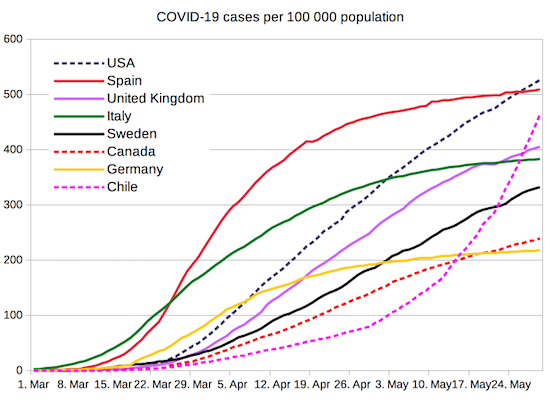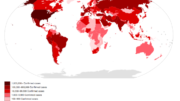While most Western countries have been enforcing strict stay-at-home orders for everyone but essential workers, one Nordic country has gained attention for taking a more lax approach to social distancing measures. According to German statistics portal statista, Sweden is currently #24 in the world in total COVID-19 cases. In comparison, neighboring countries such as Norway and Finland rank in the 40s and 50s, respectively, while the U.S. ranks #1.
The term most commonly associated with Sweden’s approach to battling COVID-19 is “herd immunity.” This strategy goes against the idea of containing a virus, arguing instead that, if enough people are exposed, they will be immune from catching it again and spreading it further, according to the Johns Hopkins Bloomberg School of Public Health. Advocates for this method of combating the virus believe that its spread is inevitable, meaning that strict social distancing measures only delay it happening, all while keeping the economy closed. Due to the lack of social distancing, a large portion of those in Sweden’s capital, Stockholm, have been exposed to the virus, and may now be immune. However, according to the World Health Organization, those who have had COVID-19 are not necessarily immune from getting it again and continuing its spread.
“I think America did the right thing. The most important thing is containment so it does not spread to others. A lot more people would be dead if we did not close everything,” Paige Nudelman (’20) said.
While Sweden is not imposing lockdown measures like many other European countries, its leaders and public health officials argue that achieving herd immunity was not the goal, but may be a byproduct of what Sweden has tried to do: keep transmission rates as low as possible with reasonable measures. For example, the country is relying on people to voluntarily adhere to social distancing guidelines rather than imposing strict regulations. As a result, gathering places such as restaurants and schools for students under 16 have remained open, and large gatherings of up to 50 are permitted, according to The New York Times. This is very different from measures that were in place in almost every U.S. state banning gatherings of more than ten people.
Although many support this strategy because it keeps the economy more or less open, Sweden has experienced similar levels of disruption to their economy as countries with tighter restrictions. According to The New York Times, the Swedish Central Bank estimates that the nation’s GDP will decrease by seven to ten percent this year, on par with the EU overall, whose economy is projected to decrease by 7.5 percent.
Another factor differentiating Sweden from many nations is its culture of trust in the government which has proven to work, at least somewhat, in people adhering to given guidelines. The U.S., however, has seen multiple protests spring up throughout the country demanding reopening of businesses. Some believe that the individualistic nature of the United States, whether or not the country’s strategy is working, is causing issues.
“I think [the U.S.] did the right thing,” Alliyah Quinonez (’20) said, “but people are still going out, so it is working but not as much as it can.”
Every county is handling the COVID-19 pandemic differently, each one concerned with its own unique issues. Only time will tell which countries managed it the best and what could have been done better.





